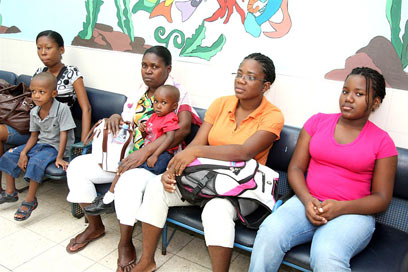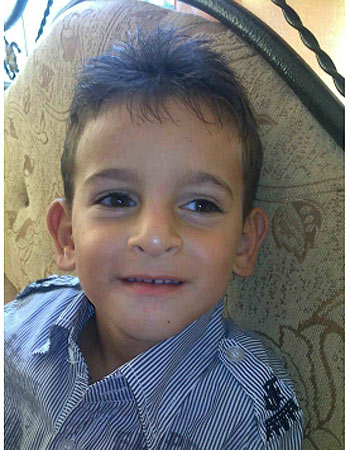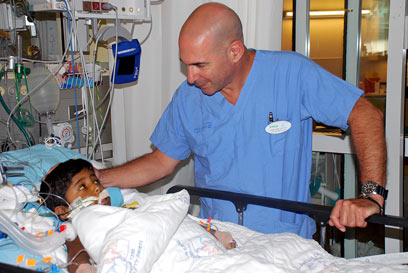By: Manggis, 10-Sep-2010
Assalamualaikum
Shalom Aleichem
To the bloggers whoever you are, of whatever faith you are and to the faithless.
Today 9th September, the Jews are celebrating their Rosh Hashanah; therefore I would like to wish Happy New Year or Shana Tova Umetukah to the Jewish community all over the world including the few remaining Jews in Malaysia.
But tomorrow is the end of Ramadan 10th September, and I would like to greet the Muslims Eid Mubarak and may Allah accepted your fasting and give you barakah.
Being a multi-religious, multi-cultural country, Malaysians are used to sharing celebrations and festivals. This phenomenon is called Kongsi Raya. The word “kongsi”, is perhaps a Chinese word (D, please verify), which means “sharing”. Malaysians started to notice this many years ago when Hari Raya (the end of Ramadan celebration) was shared with the Chinese New Year. For the Chinese, the greeting is “Kong Si Fat Chai”, so in Malaysia we turned this term to become “Kongsi Raya” to signify the sharing of this Chinese New Year festival with Hari Raya.
Kongsi Raya is very rich and jovial festivals since the Malays and the Chinese will have their Big Makan (feast) almost at the same time. For both the Chinese and Malay communities, festivals means feast. It also means, visiting each other. For the Chinese the Big Feast is celebrated with their family on the eve of the festival followed by gambling sessions with family members and friends. Gambling in Chinese festival is almost a must. It’s significant and important to the Chinese culture because Chinese largely think, life is a gamble. To succeed, one needs a kind of gamble to take risk, to try new things and to explore the unknown. Gambling sessions is a practise to be bold to control one own destiny by chance.
While for the Muslims the feast is celebrated differently with their families after the Shalat (prayer) Eid-ul-Fitr, which will be mid-morning. But for Muslims, especially in Malaysia (not elsewhere, I think), prior to the feast is a special time, i.e. the time for the ritual of “forgiving and forgetting”. During this ritual, the younger family members will ask forgiveness from the elders, i.e. children to their parents etc... This is a special bonding event where the children will kiss the hands of the elders; this is the time when the elders will feel most appreciated, despite their children being distance, either physically or emotionally. They will recalled for any differences and ask for forgiveness, and make “halal” of whatever they (the younger ones) have taken either knowingly or unknowingly. This is the moment, when bad relationships are mended between relatives and friends. Our usual greetings to each other are:



Selamat Hari Raya, Maaf Zahir dan Batin, Halalkan Makan dan Minum.
“Maaf Zahir dan Batin” means, forgive me for all the wrongs that I have done outwardly or internally.
In the Muslim family household, this event of forgiving and forgetting is so special and sweet that no family members would wish to be alone during hari raya. They would almost feel like outcasts if they have no family homes to go to. Where ever they are, they would wish to come home to see their father and mother during this period. Since most elders live in the villages, big cities in Malaysia would be like ghost towns and empty during the festival, for the city dwellers would certainly return home to visit their elders. For those who really cannot go home, they will try to reach home, these days via telephone or other means of communications. For Malaysian Malays overseas, this moment will be celebrated by big gatherings. No one, really want to be alone during this period.
In addition, for the Muslims, this period is also celebrated by giving away alms and charity (sedekah). The compulsory alms (zakat fitrah), must be paid before the prayer Eid-ul-Fitr, the amount paid is equivalent to a day meal for yourself. Malaysia has numerous well organised alms collection centres throughout the country and will re-distribute the collection to the poor and needy. In addition, during this period, most people will perform their 4th Muslim ritual of giving alms (zakat) due to their wealth. This is a Muslim form of taxation. Remember, non-Muslim do not pay zakat. It is not obligatory for them to perform this. For all Malaysians (Mulsims and non-Muslims) they pay the normal income tax. In addition for Muslims, they must pay their obligatory alms. So Muslims pay double taxation. In order to adjust for this “slight injustice”, the Government allows, for Muslims to claim tax rebate for the alms paid.
Sometimes, I heard accusation that non-Muslims pay jizyah in the Muslim world, this is not true especially in Malaysia, Muslims pays double taxation. I pay double taxation. But I am a happy tax payer and am proud that I contribute to my community.

Many delicious cookies are made or purchased during hariraya; some are traditional while many are being created to suit the time and modernity. For example, many cookies these days are made from cornflakes, chocolates, nuts and other ingredients imported from the western cultures. Many people make a lot of money for making these cookies for sale “Hari raya cookies making “ is now a well-known, once a year business enterprise. My own favourite cookies are the pineapple tarts.
Eid-ul-Fitr is celebrated in a very grand (raya) way in Malaysia and that is why it is called hari raya. This is the day when you must wear your best cloth, usually new ones. In old days, only during hari raya that you get a change of clothing. So usually, my parents will give me two new clothes which will last me for the whole year. So of course this is also a flourishing business time for tailors and dress makers. As our economic position is improving a lot, it is not uncommon, for the tailoring business to accept orders one year in advance, i.e. as soon as hari raya ends, the tailor would receive new orders for the next year raya celebration.

For children, eid-ul- fitr is also magical and important. Apart from the celebration means they can play with fire crackers, it is also time for them to have as many cookies as possible. In addition, they will receive money. This is what children look forward to, since during hari raya, they will be able to collect some extra pocket money, from “duit raya”. During my childhood days of duit raya for the Malays ranges from 5 sen to one ringgit, if I am lucky. These days, it ranges from 20 sen to two ringgit typically. But of course, children will get more from their uncles, aunties or relatives.

Copying the tradition of the Chinese ang paw, also money given away for children during Chinese New Year, these days, duit raya is given in green packet, while ang paw is in red-packet. Come to think of it, the traditions of giving ang paw packet red or green and playing with fire crackers are non-Islamic. These are local cultures possibly from China infused into the Malay culture and adopted during the Muslims festival.
On the 7th night before the end of Ramadan, usually in the village, it is traditional for the Malays to lit up their compounds with light from little kerosine lamps. These nights are called “malam tujuh likur”. Again, I do not think, this is part of the Muslims tradition. I would like to think, this tradition to be the remnant of the Hindu tradition on their light festival (the Deepavali). Anyway, Malaysia is a melting pot, everything can, Malaysia Boleh.
One tradition which was invented during the last 10-20 years, as Malaysia become a modern country, is the “open house culture”. When city dwellers come back to their cities, they want to celebrate hari raya with their friends. Hence, they make an open house party where all friends and relatives are invited. It is open house, which means, friends of friends of friends are all welcome. By right, you do not need an invitation to come to any of this sort of party. Gate-crashers are welcomed. Important people, like Kings, Sultans and Politicians have their open houses on the first or second day of hariraya. In some cases, for example Tun Mahathir’s open house, received as many as 30,000 people in one day. Tun and his family shake hands with each and every one of these 30,000 people! And to each one, he will greet “Selamat Hari Raya Maaf Zahir dan Batin”.
In Malaysia, (unlike in other Muslim countries), hari raya is celebrated in a very grand way; it almost lasted one whole month of Shawal!
The other nice feature of hari raya, because Muslim calendar is based on lunar cycle, the Muslim year is short by 10 days. This makes hariraya, shifted by 10 days every year. Hence, Kongsi Raya is now an event shared between other faiths that have their festival based on lunar/solar cycle. A few years ago, Kongsi Raya was with the Chinese New Year, i.e. when hariraya was in February or January. Then Kongsi Raya happened during Christmas (December), after that Deepavali (November), this year Kongsi Raya is with the Jewish Rosh Hashanah (October). Unfortunately, this Jewish celebration is almost unknown to me. I wish Hanan can tell us a bit more of this festival. Of course, I can read about it in Wikipedia, but surely the celebration will have its own local flavour. I wonder how the Israelis celebrate this festival in Israel.
I wonder also how, the Palestinians celebrated the end of Ramadan. In Gaza, they must have celebrated this celebration modestly. My heart feels for them. I wish both the Israelis and their Palestinian cousins have this culture of “forgiving and forgetting’. I wish they will take advantage of both the festivities (Eid-ul-Fitr) and Rosh Hashanah, to shake hands, to forgive and to forget the past. I wish they reconcile with each other and they determine to start afresh and new. May you Israelis and Palestinians ”kongsi“ the land together. No more fighting and no more killing.
I wish for peace in the Middle East. May Allah grant peace and friendship for these two groups of people.
Wassalam.















